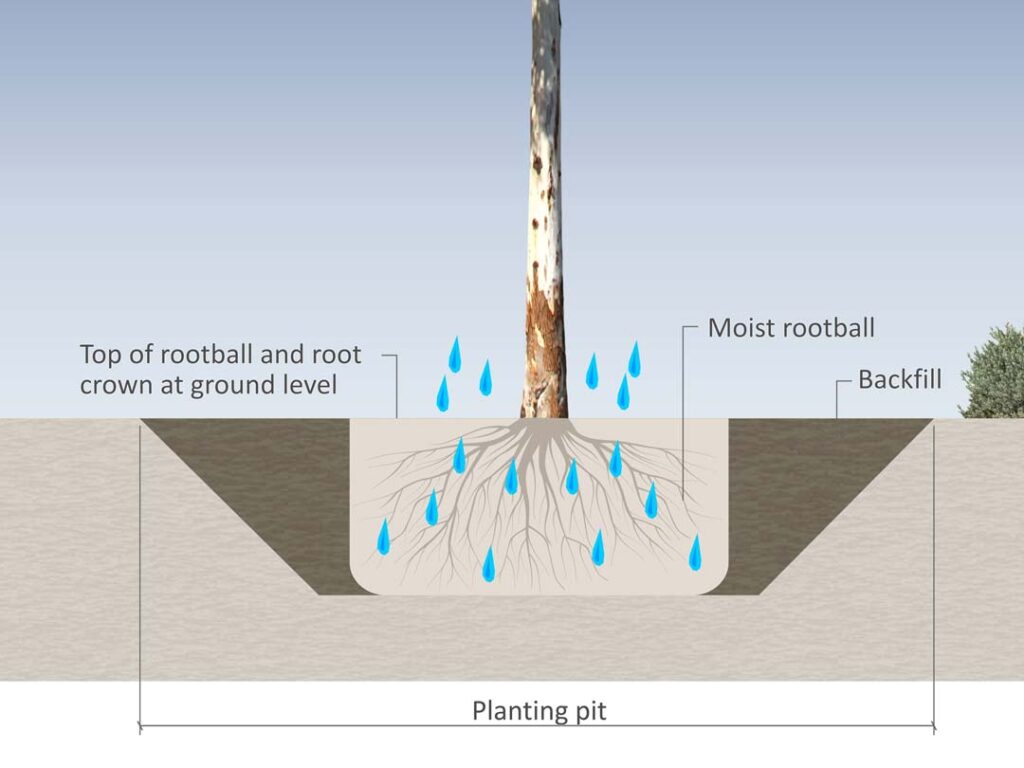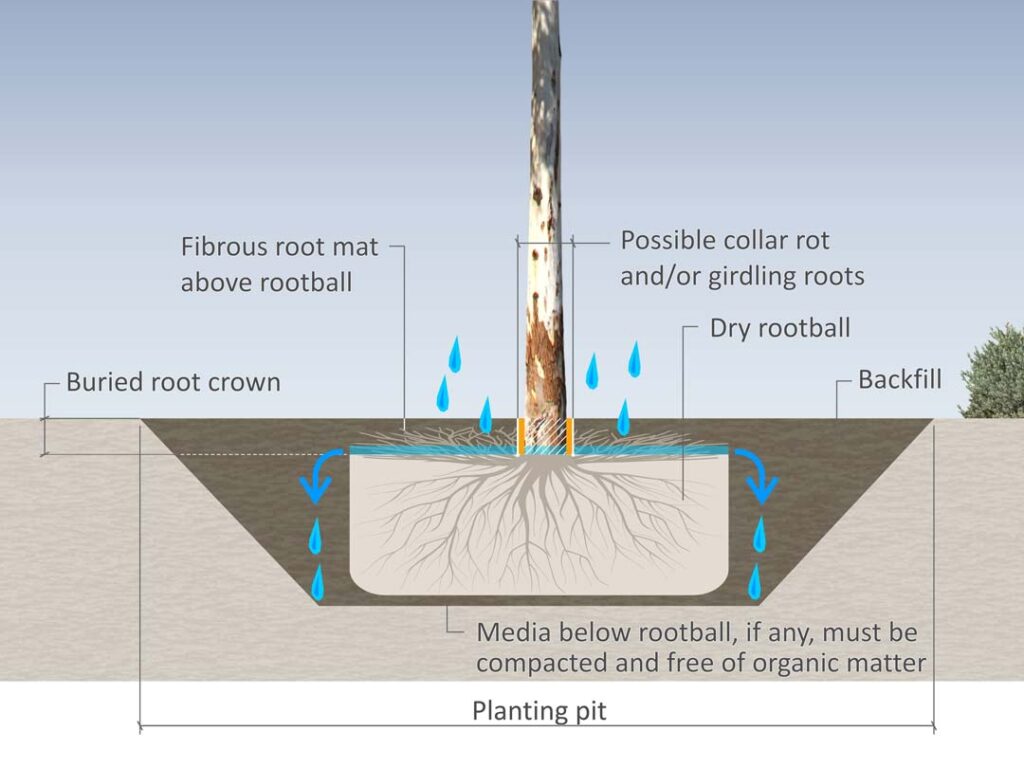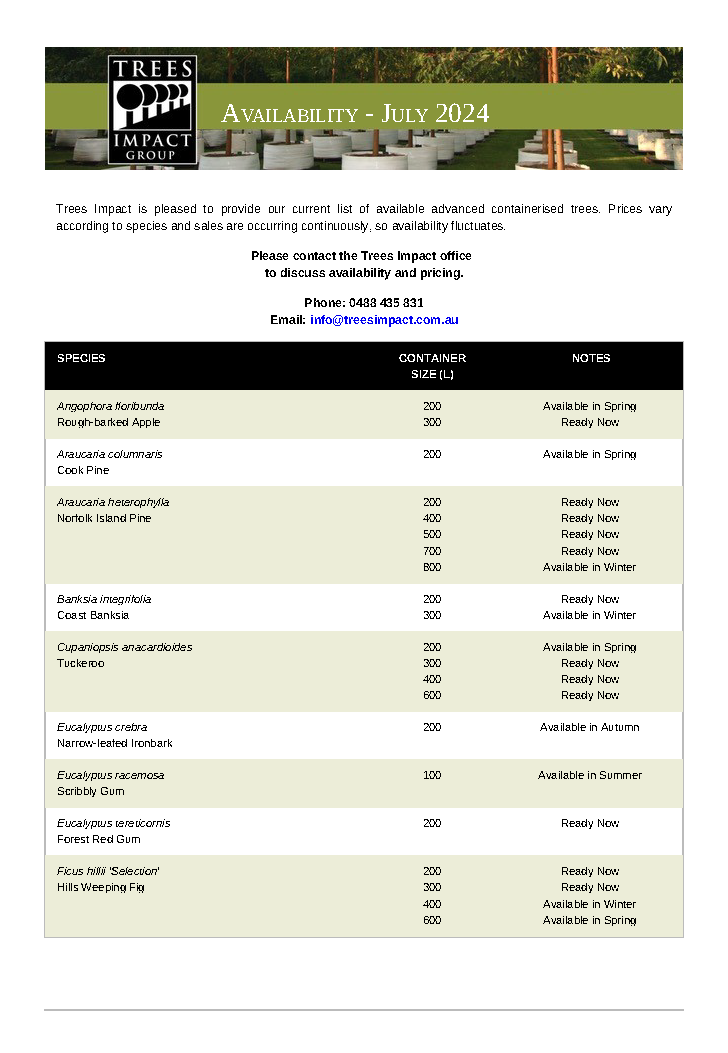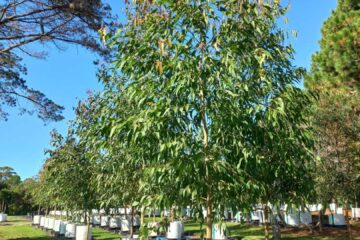Where Should You Put The ‘Root Crown’?
Correct placement of the ‘root crown’ is essential for the long-term success of your trees.
The structure of the roots of trees has evolved to suit life below ground. Similarly, the above-ground parts of the tree have evolved to live and grow above the ground.
The junction where those below-ground parts and above-ground parts meet is called the ‘root crown’, and it is only logical that the root crown should be right at ground level. However, it is prevalent that trees are over-potted during nursery production (with the root crown buried in the potting mix) and planted too deep on site (with the root crown buried in the planting pit). In either case, significant problems can result.
In this post, you’ll learn about the problems to look out for, how they occur, and – most importantly – how to avoid them in the first place.

WHAT PROBLEMS CAN ARISE?
Problems caused by burying the root crown include:
Girdled roots
When the root crown is buried, roots grow upwards into this new layer of media haphazardly. Commonly, those new roots at the base of the stem benefit from extra water due to stem flow and grow vigorously around the base of the stem. This can result in ‘girdled’ roots at the base of the trunk. As the roots and trunk expand, the result can be fatal – see ‘It’s All in the Roots’ for more information.
A mat of fibrous roots
In addition to potentially creating girdled roots, these upward-growing roots commonly form a dense mat of fine fibrous roots above the original rootball and root crown that can be quite hydrophobic. Getting water through this layer to the bulk of the rootball below becomes very difficult, and the likelihood of setback or death due to moisture stress is greatly increased.
Sealing-off the rootball with site soils
The texture of the site soils is almost invariably finer than that of the potting mix in the rootball. This means capillary tension will be greater in the site soils than in the rootball. If trees are planted too deeply, the finer site soils on top of the rootball hold water ‘perched’ above the rootball, with any excess moisture draining away to the sides. Similarly, even a very thin cap of site soil washed across the rootball can seal the top causing water to run off without penetrating. The rootballs can then dry out, resulting in stressed, dying, or dead trees.
Collar rot
Tree trunks are meant to be above the ground, not buried. While not as common as other problems arising from burying the root crown, with some species it results in ‘collar rot’ where the buried bark and cambium rot away, the tree is effectively ringbarked, and it ultimately dies.

HOW DO THESE PROBLEMS OCCUR?
Over-potting is commonplace in Australian nurseries, often due to a lack of staff training and/or a lack of quality controls.
In the landscape itself the root crown can be buried in a number of ways, including:
Trees planted too deeply
If the spot where the rootball is to sit in the planting pit is too deep (i.e. deeper than the height of the rootball), the root crown is likely to end up below ground level and then be buried with backfill. (The sections of the planting pit beyond where the rootball sits may be dug deeper if additional rooting depth is needed).
Subsidence
If the planting pit is excavated to a depth greater than the depth of the rootball and, in order to lift the rootball, the media below it is then built up, either without sufficient compaction or using media rich in organic matter, the rootball will soon sink and subsequently become buried.
Trees planted too low on a sloping site
When trees are planted on sloping sites such that the height of the root crown is at or below the midpoint between the high and low sides of the hole, soil will wash down to ‘reinstate’ the original slope over time. The root crown then becomes buried in the process.
Rootballs covered in silt as a result of watering
When trees are planted and a watering ring is created using site soils, unless watered carefully, fine particles can wash down from the watering ring and settle over the top of the rootball.
HOW CAN YOU AVOID THESE PROBLEMS?
- Firstly, check the height of the root crown of all trees supplied to your project. Both the NATSPEC specification for trees and AS 2303:2018 (the new Australian Standard for Tree Stock for Landscape Use) specify that the root crown should be at the surface of the rootball. If the root crown has been buried in its container, it is a ground for rejection – assuming either standard has specific application under the supply arrangements. However, if the trees are otherwise good, you may choose to accept them but make sure that any build-up of media and fibrous roots above the root crown is removed before planting and the (now exposed) root crown remains at ground level when planted.
- Take care with the depth of your planting pit. Ensure that the root crown is at the surface when the tree is planted and that it stays there by either digging the planting pit only to the same depth as the rootball or by making sure that the media below the rootball is largely free of organic matter and well compacted so that it will not subside.
- When planting trees on sloping sites, make sure that the height of the root crown is above the mid-point between the upper and lower sides of the planting pit (and then mound up the site soils on the lower side of the hole).
- When watering rings are created, apply water gently to avoid washing the finer textured site soil across the top of the rootball. Regularly check that the surface of the rootball remains exposed and remove any silt build-up found so that water can penetrate.
Keeping the root crown at the surface is critical to the long-term success of your trees. Take a little care when buying, planting, and watering your trees so the potentially fatal problems associated with burying the root crown can be avoided.
Further Reading
For general advice about effective watering of newly planted trees, assuming the top of the rootball remains exposed, see ‘Make Sure Your New Trees Thrive’ and ‘New plantings – Early Watering Needs: Plus the Impact of Rain’.and ‘Watering Newly Planted Trees’]

